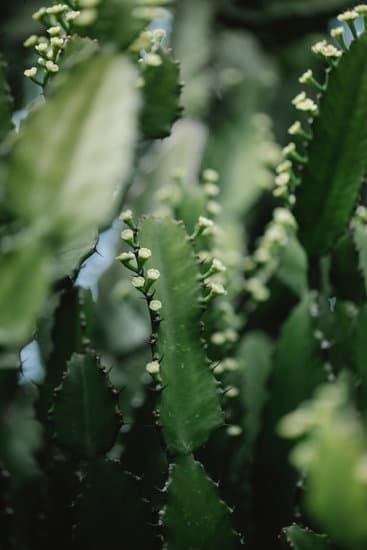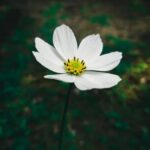Are you looking to enhance the beauty and functionality of your outdoor space? In this article, we will explore basic landscaping ideas that can transform your yard into a stunning and inviting area. Landscaping is not just about creating a visually appealing environment but also about designing an outdoor space that suits your lifestyle and needs.
From selecting the right plants to incorporating hardscaping, water features, and outdoor lighting, we will cover a variety of tips and strategies to help you create the perfect landscape for your home. Whether you are a seasoned gardener or a beginner, these basic landscaping ideas will inspire you to make the most of your outdoor space.
When it comes to landscaping, selecting the right plants is crucial for a successful and thriving yard. We will discuss tips for choosing plants that are well-suited for your specific climate and soil conditions, as well as how to consider their size, shape, and color for a cohesive look. Additionally, we will explore ideas for creating functional outdoor spaces by designating areas for dining, lounging, entertaining, and incorporating elements like fire pits and seating areas.
Incorporating hardscaping is another important aspect of basic landscaping that can add structure and visual interest to your outdoor space. We’ll explain the role of hardscaping in landscape design and provide examples of elements such as pathways, retaining walls, and decorative stones.
By maximizing curb appeal through planters, lighting, water features, and more, you can create a welcoming first impression for visitors while also enjoying an attractive entryway for yourself. Stay tuned as we dive deeper into these basic landscaping ideas that will help you achieve a beautiful landscape without breaking the bank.
Selecting the Right Plants
When it comes to basic landscaping ideas, selecting the right plants is crucial to creating a beautiful and thriving outdoor space. One of the first steps in choosing the right plants for your landscaping project is to consider your specific climate and soil conditions.
Researching which plants thrive in your area will ensure that your garden remains healthy and vibrant year-round. Factors such as sun exposure, humidity levels, and average temperatures should all be taken into account when selecting plants for your landscape.
In addition to considering environmental factors, it’s important to think about the size, shape, and color of the plants you choose. Creating a cohesive look in your landscaping involves selecting plants that complement each other in terms of their visual appeal. Mixing different shapes and sizes of plants can add interest and texture to your garden, while choosing a color scheme that harmonizes with your overall design concept can tie the whole landscape together.
Lastly, consider the maintenance requirements of the plants you’re considering. Some homeowners may prefer low-maintenance options, while others are willing to put in more effort to care for high-maintenance specimens.
It’s essential to strike a balance between choosing plants you love and being realistic about how much time you can commit to their care. By carefully selecting the right plants for your landscaping project, you can create an outdoor space that is both visually stunning and easy to maintain.
Creating Functional Outdoor Spaces
When it comes to basic landscaping ideas, creating functional outdoor spaces is a crucial aspect of enhancing the beauty and usability of your yard. With some thoughtful planning and design, you can transform your outdoor area into a versatile space for dining, relaxing, and entertaining.
To achieve a functional outdoor space, consider incorporating the following elements:
- Designating areas: Determine specific zones for different activities such as dining, lounging, or cooking. This can be achieved through the strategic placement of furniture or by creating separate sections using landscaping features like plants or hedges.
- Outdoor elements: Consider adding functional elements like fire pits, outdoor kitchens, or seating areas to enhance the usability of your outdoor space. These features not only add practicality but also create an inviting atmosphere for gatherings with family and friends.
- Flexible seating: Opt for versatile seating options that can easily be rearranged based on the number of guests or the type of event you are hosting. Consider investing in outdoor furniture that is both comfortable and durable to withstand varying weather conditions.
By carefully planning and incorporating these elements, you can create a functional outdoor space that meets your specific needs while adding value to your home.
Achieving a balance between aesthetics and functionality is key when implementing basic landscaping ideas in your outdoor space. With careful consideration of how you envision using the area, you can create an environment that seamlessly blends beauty with practicality. Whether it’s enjoying a quiet meal under the stars or hosting lively gatherings with loved ones, a well-designed outdoor space adds immense value to your property.
Incorporating Hardscaping
When it comes to basic landscaping ideas, hardscaping plays a crucial role in creating structure and enhancing the functionality of your outdoor space. Hardscaping refers to the non-living elements of landscaping such as pathways, retaining walls, and decorative stones. These features not only add visual interest but also serve practical purposes in your yard or garden.
One important consideration when incorporating hardscaping into your landscape design is to ensure that these elements complement the overall look and feel of your outdoor space. For example, if you have a modern home, sleek and angular hardscaping materials like concrete or metal might be more appropriate, while a traditional or rustic home may benefit from natural stone or brick hardscaping.
Another aspect to consider is the maintenance required for different hardscaping elements. While decorative stones can be low-maintenance and cost-effective, they may not provide the same level of usability as a well-designed patio made with durable materials. It’s important to strike a balance between aesthetics, functionality, and maintenance when choosing hardscaping features for your landscape.
Incorporating hardscaping into your basic landscaping plan not only adds visual appeal but also provides structure and organization to your outdoor space. By carefully selecting materials and considering both form and function, you can create a cohesive and functional landscape that enhances the beauty and usability of your property.
| Hardscape Element | Consideration |
|---|---|
| Pathways | Ensure they are wide enough for easy passage |
| Retaining Walls | Choose materials that complement the overall aesthetic |
| Decorative Stones | Weigh the trade-off between low maintenance vs. usability |
Maximizing Curb Appeal
Enhancing the look of your front yard is an important aspect of basic landscaping. It creates a welcoming first impression for visitors and passersby, and adds value to your home. One of the most effective ways to maximize curb appeal is by selecting the right plants and accessories that complement the style of your home. Consider using colorful flowers to add a pop of color, or incorporating evergreen shrubs for year-round interest.
In addition to plant selection, adding other elements such as planters, lighting, and outdoor art can further enhance your curb appeal. Planters filled with seasonal blooms can add a touch of color to your entryway, while outdoor lighting not only creates ambiance but also highlights landscaping features during the evening hours. Similarly, adding decorative elements like statues or water features can create focal points in your front yard and elevate its visual appeal.
Another simple way to maximize curb appeal is by maintaining a neat and tidy exterior. This includes regular lawn care, keeping walkways clear and well-groomed, and managing any overgrown plants. By paying attention to these details, you can ensure that your home makes a positive first impression.
Below is some relevant data for this consideration provided in table format.
| Element | Tips |
|---|---|
| Plant Selection | Choose colorful flowers for pop of color; incorporate evergreen shrubs for year-round interest |
| Accessories | Add planters filled with seasonal blooms; use outdoor lighting to highlight landscaping features during evening hours |
Water Features and Outdoor Lighting
Adding water features and outdoor lighting to your basic landscaping can significantly enhance the beauty and ambiance of your outdoor space. Whether you’re looking to create a serene retreat or an inviting entertaining area, these elements can elevate your landscaping to a whole new level.
Water Features
One of the most popular additions to basic landscaping ideas is the inclusion of water features such as fountains, ponds, or waterfalls. These features not only add visual interest but also create a soothing atmosphere with the sound of flowing water. When choosing a water feature, consider the size of your outdoor space and select a design that complements the overall style of your landscaping.
Incorporating a water feature into your basic landscaping can also attract wildlife such as birds and butterflies, adding another layer of life and movement to your outdoor space. Additionally, water features can serve as focal points within your landscape design, drawing the eye and creating a sense of tranquility.
Outdoor Lighting
Outdoor lighting is an essential element in basic landscaping that often gets overlooked. The right lighting not only illuminates your outdoor space for practical purposes but also creates an inviting ambiance for evening gatherings or quiet relaxation. There are various options for outdoor lighting, including string lights, pathway lights, spotlights, and lanterns, allowing you to create different moods in different areas of your landscape.
Strategic placement of outdoor lighting can also highlight key landscaping features such as trees, shrubs, or architectural elements. By incorporating lighting into your basic landscaping design, you extend the usability of your outdoor space well into the evening hours while creating a magical atmosphere.
By integrating water features and outdoor lighting into your basic landscaping plan, you can transform an ordinary yard into a captivating oasis that reflects your personal style and enhances the functionality of your outdoor living space. Start exploring these ideas today to take full advantage of their benefits in beautifying and maximizing the potential of your landscape.
Low-Maintenance Landscaping
Creating a low-maintenance landscape is ideal for those who want to enjoy the beauty of their outdoor space without spending excessive time and effort on upkeep. Here are some basic landscaping ideas to achieve a low-maintenance garden:
- Choose native plants that are well-suited to your climate and soil conditions, as they typically require less water and maintenance.
- Incorporate a variety of ground covers such as mulch, gravel, or drought-tolerant plants to minimize weed growth and reduce the need for frequent mowing.
- Consider using a mix of evergreen and deciduous plants to maintain interest in your landscape year-round without the hassle of replanting each season.
Efficient irrigation is also essential for low-maintenance landscaping. Opt for drip irrigation systems or soaker hoses to deliver water directly to plant roots, minimizing water waste and reducing the need for constant watering. Additionally, incorporating smart design choices such as grouping plants with similar watering needs together can further simplify maintenance tasks.
When it comes to hardscaping, choose durable materials that require minimal upkeep. For example, opt for low-maintenance materials like concrete pavers or natural stone for pathways and patios rather than high-maintenance options like wood decking. By selecting low-maintenance hardscaping elements, you can minimize the time and effort required to keep your outdoor space looking its best.
By incorporating these basic landscaping ideas for low-maintenance design, you can create a beautiful outdoor space that requires minimal upkeep while still bringing joy and relaxation.
Budget-Friendly Tips
When it comes to landscaping, creating a beautiful outdoor space doesn’t have to break the bank. With some creativity and strategic planning, it’s possible to achieve stunning results without spending a fortune. Here are some budget-friendly tips for those looking to enhance their outdoor space without overspending.
Prioritize Projects
One of the first steps in creating a budget-friendly landscaping plan is to prioritize which projects are most important to you. Whether it’s creating a cozy seating area, adding colorful plants, or installing a pathway, identifying your top priorities will help you allocate your budget efficiently. By focusing on one project at a time, you can spread out the costs and avoid feeling overwhelmed by trying to do everything at once.
DIY Options
Another way to save money on landscaping is by taking on some of the work yourself. There are plenty of DIY options that can help you cut down on labor costs, such as planting flowers and shrubs, building simple garden structures, or laying down mulch or gravel. Additionally, there are many online resources and tutorials available that can guide you through various landscaping projects, making it easier than ever to tackle these tasks on your own.
Repurpose and Upcycle
Repurposing materials and upcycling items can also help stretch your landscaping budget. Instead of buying new furniture or decor pieces, consider giving old items a fresh coat of paint or repurposing them for use in your outdoor space. You can also look for reclaimed materials like bricks, pavers, or wood to use in hardscaping projects, which not only saves money but also adds character and charm to your landscape.
By keeping these budget-friendly tips in mind and getting creative with your approach, you can achieve a beautiful landscape without breaking the bank. With some strategic planning and a little elbow grease, you’ll be well on your way to enjoying an inviting outdoor space that enhances the beauty and functionality of your home.
Conclusion
In conclusion, implementing basic landscaping ideas can truly transform your outdoor space into a beautiful and functional area that you can enjoy for years to come. By carefully selecting the right plants that thrive in your specific climate and soil conditions, as well as considering their size, shape, and color, you can create a cohesive look that adds visual interest to your landscape.
Additionally, creating functional outdoor spaces by designating areas for dining, lounging, and entertaining, and incorporating elements like fire pits and seating areas, can make your outdoor space more enjoyable for both you and your guests.
Incorporating hardscaping elements such as pathways, retaining walls, and decorative stones not only adds structure but also enhances the overall design of your landscape. Maximizing curb appeal in the front yard with plants, lighting, and other accessories creates a welcoming first impression for visitors. Adding water features like fountains or ponds, along with outdoor lighting to highlight landscaping features at night, can elevate the overall ambiance of your outdoor space.
Lastly it’s important to remember that even with all these elements in mind it is possible to create a low-maintenance landscape by choosing efficient irrigation methods and smart landscaping choices. For those on a limited budget there are plenty of budget-friendly tips available including DIY options for cost savings. With these basic landscaping ideas in mind, homeowners are encouraged to get started on their projects; turning their outdoor spaces into havens of beauty and functionality.
Frequently Asked Questions
What Is the Cheapest Type of Landscaping?
The cheapest type of landscaping typically involves using low-cost materials and focusing on simple designs. Using mulch, gravel, or inexpensive plants can help keep costs down. DIY projects that involve minimal grading or excavation can also save money. Additionally, opting for native plants that require less maintenance and watering can be budget-friendly.
How Do You Landscape for Beginners?
For beginners, landscaping can seem overwhelming, but starting with basic tasks like mowing the lawn, pruning shrubs, and planting easy-to-maintain flowers and plants can provide a good foundation. It’s important to assess the space and consider factors like sunlight, soil quality, and water drainage before making any changes.
Researching different plant varieties and their care requirements is also essential for beginners.
How Do You Landscape on a Low Budget?
Landscaping on a low budget requires careful planning and prioritizing. One way to save money is by doing as much of the work yourself as possible, such as clearing the land, planting seeds or seedlings instead of mature plants, and choosing cost-effective materials like gravel or mulch for hardscaping.
Shopping for discounted plants at the end of the season or utilizing local plant exchanges can also help stretch a landscaping budget. Ultimately, creativity and being resourceful are crucial when working on a low-budget landscaping project.

Welcome to my gardening blog! I am passionate about plants and enjoy sharing my knowledge and experiences with others. In this blog, I will write about everything related to gardening, from tips on how to get started to updates on my own garden projects.





